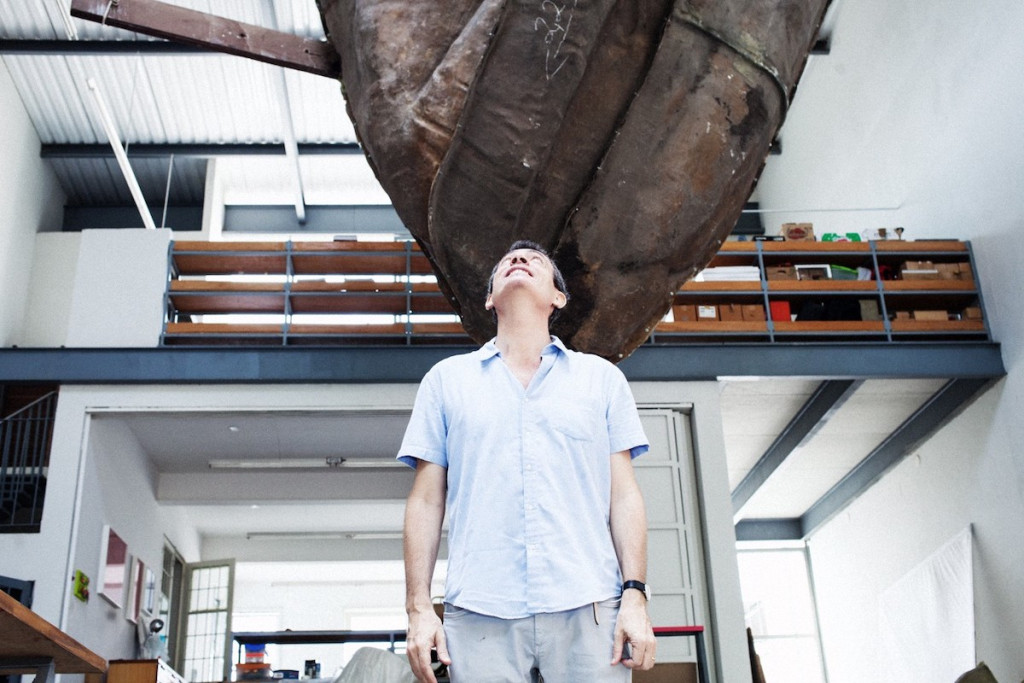ART WORLD NEWS
Carlito Carvalhosa, Artist at the Forefront of Brazilian Scene, Has Died at 59
Carlito Carvalhosa, a Brazilian artist with a loyal following in his home country, has died at 59. Folha de S.Paulo reported that Carvalhosa died on May 13 of intestinal cancer.
In a statement, Galeria Nara Roesler, which represents the artist, wrote, “Brazilian art has lost a fundamental figure of the period between centuries, but the world gains an immeasurable artistic legacy that it is our responsibility to keep alive, to continue interpreting, and to place on the international level that it deserves.”
Carvalhosa was among the most widely acclaimed contemporary artists in Brazil, though his art had rarely been seen outside the country until the past decade. In his striking paintings, sculptures, and installations, which he first began creating in the 1980s, Carvalhosa altered viewers’ perceptions of gallery spaces, adapting the visual languages of Neo-Concretism and Minimalism for a new generation.
Related Articles
Born in São Paulo in 1961, Carvalhosa was a founder of the influential Casa 7 group, which also included Paulo Monteiro, Nuno Ramos, Fábio Miguez, and Rodrigo Andrade. Based in São Paulo’s Pinheiros neighborhood, the artist group staked a claim for the relevancy of painting during the 1980s, at a time when the medium was believed to have grown outmoded. Members worked under the sign of Philip Guston, producing dark, foreboding images that existed somewhere between figuration and abstraction.
In his solo practice, Carvalhosa drew on work by Hélio Oiticica, Lygia Clark, and others. In 2011, for his first North American one-person show, he brought the installation Sum of Days to the Museum of Modern Art in New York. (A version of it had premiered at the Pinacoteca de São Paulo the year before.) During the course of the presentation’s run, a translucent white cloth floated above the museum’s second-floor atrium. Ensconced within were hanging microphones that played ambient noise recorded the day before. On certain days, musically adept friends such as Philip Glass and Michael Riesman would perform in it at times announced with short notice.
For Carvalhosa, the work was intended to have organic qualities that were not inherent in its materials. “We are alive, and we see it moving and think it’s alive, too,” he told Art in America in 2011. “But it’s not.”
Not all critics were impressed by the installation, however. “As a work of art Carlito Carvalhosa’s Sum of Days, which fills the Museum of Modern Art’s atrium, is as thin as the sheer white fabric it is mainly made of,” Ken Johnson wrote in the New York Times.
In 2013, when the University of São Paulo’s Museu de Arte Contemporânea reopened, it showed Carvalhosa’s installation Sala de Espera (Waiting Room), in which a number of telephone poles were bolted to structures in the gallery, effectively altering how viewers moved through the space. “The visitor to this installation undergoes a process that is the reverse of the artist’s, apprehending the particular after the general effect, the fragmentary process after the finished whole product, rather than the other way around,” art historian Carol Armstrong wrote in Artforum.
In a statement, dealer Nara Roesler said, “His work will remain, it will stand the test of time, and with it Carlito’s light and his broad, beautiful smile, his affectionate look, his calm and loving words.”











